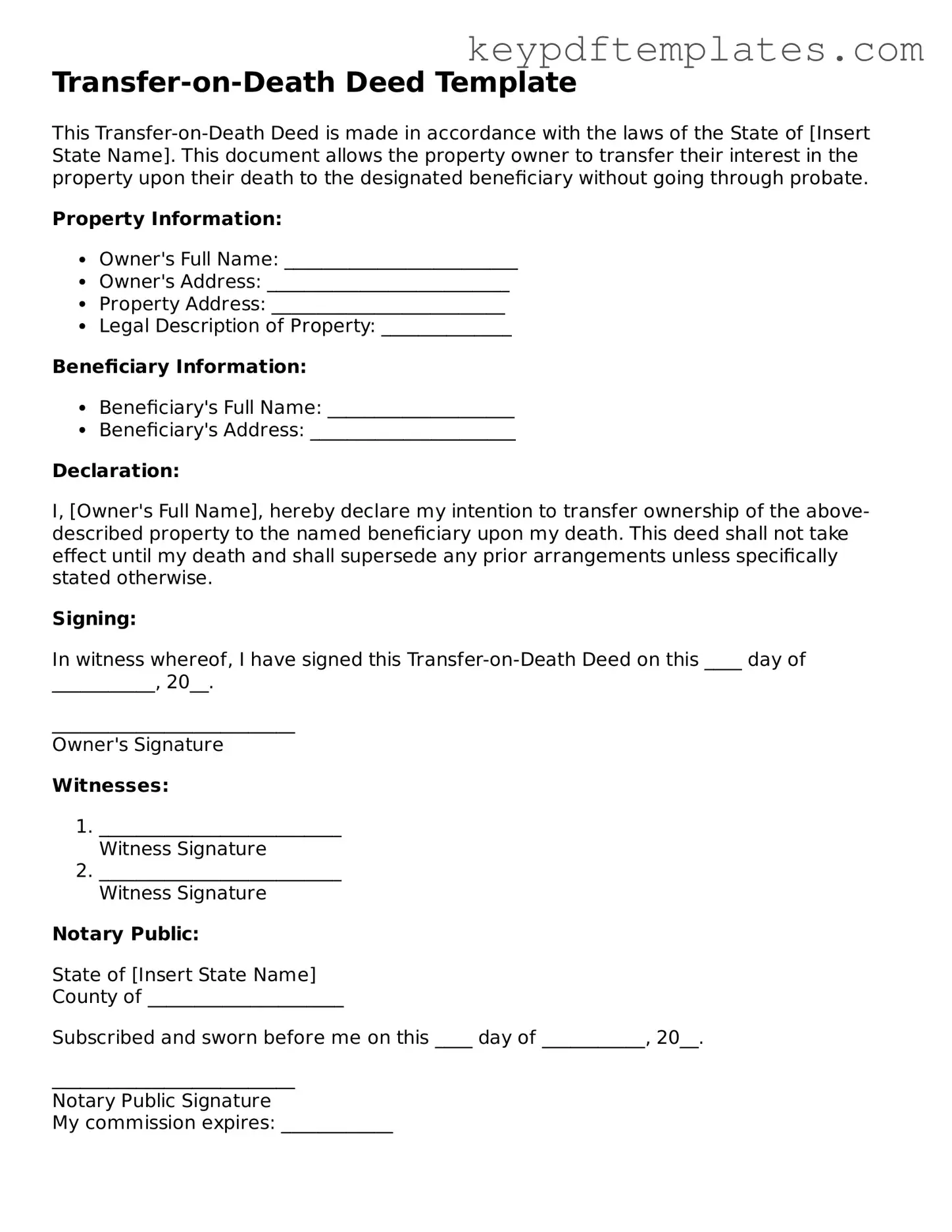Printable Transfer-on-Death Deed Template
A Transfer-on-Death Deed is a legal document that allows an individual to transfer real estate property to a beneficiary upon their death, bypassing the probate process. This deed provides a straightforward way to ensure that your property goes directly to your chosen heirs. Understanding how this form works can help streamline estate planning and provide peace of mind for property owners.
Modify Document Online
